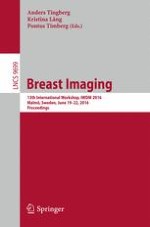2016 | OriginalPaper | Buchkapitel
Dosimetric Modeling of Mammography Using the Monte Carlo Code PENELOPE and Its Validation
verfasst von : Jason Tse, Roger Fulton, Donald McLean
Erschienen in: Breast Imaging
Aktivieren Sie unsere intelligente Suche, um passende Fachinhalte oder Patente zu finden.
Wählen Sie Textabschnitte aus um mit Künstlicher Intelligenz passenden Patente zu finden. powered by
Markieren Sie Textabschnitte, um KI-gestützt weitere passende Inhalte zu finden. powered by
